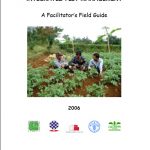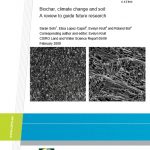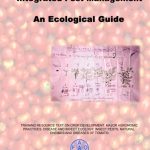
18 downloads
Title of document: Cambodia Agriculture Development Authors: Journal’s name if any: Ministry/Government Agency/Organisation: Kingdom of Cambodia Year of publication: 2017 Geographic focus: Cambodia Main issues / topics addressed (for example: Cambodia Agricultural Development 2016; National Perspective on Food Security and Future Agriculture in Cambodia; National Strategy for Food Security and Nutrition 2014-2018……) School of agroecology (if any): Web address to original document (if any): Summary: The presentation of the “Technical Workshop Distributional Effects of Disasters on Food Security in ASEAN, 17-20 July 2017, Putrajaya, Malaysia” Read More

10 downloads
Title of document: Minute of the Annual Meeting 3rd Mekong Extension Learning Alliance (MELA) Report, 30th October – 1st November 2017, Cambodia Authors: HEKS/EPER Journal’s name if any: Ministry/Government Agency/Organisation: HEKS/EPER, GFRAS, Swiss Agency for Development and Cooperation, MELA, MAFF Year of publication: 2017 Geographic focus: Mekong Region Main issues / topics addressed (for example: Country presentations on new policy, innovations, challenging which are concerning to agricultural extension and rural advisory service; A panel discussion on Pesticides Impacts to Health and Environment facilitated ……) School of agroecology (if any): Web address to original document (if any): Summary: The 3rd Annual Meeting of the Mekong Extension Learning Alliance (MELA) was held from 30 October to 1st November, 2017, at Angkor Paradise Hotel in Siem Reap, Kingdom of Cambodia. It gathered participants from every country in the Mekong region MELA brings together agricultural extension and rural advisory service providers from five countries linked by the Mekong River. The Mekong River passes through Yunnan province of China and five countries in South East Asia: Myanmar, Laos, Thailand, Cambodia and Vietnam. Agricultural extension and rural advisory services in the Mekong Region have many features in common. This network was established in 2015 following discussions at the meeting held in Hanoi in 2013 on ‘Reaching the Millions’ in Hanoi. The main objectives of the MELA meeting were: to share information, knowledge, experience, and best practices in advisory services among Mekong Region countries and institutions involved in agricultural and rural development; and to provide a space for reflection, hands-on peer support and learning. This event was organised by HEKS/EPER, the General Directorate of Agriculture, Ministry of Agriculture, Forestry and Fisheries, the Cambodia MELA Coordinating Committee, with support from GFRAS and the Swiss Agency for Development and Cooperation Read More
6 downloads
Title of document: Adoption of Organic Rice for Sustainable Development in Bangladesh Authors: Shaikh Tanveer Hossain, Hideki Sugimoto, Hideto Ueno and Sheikh Mohammed Rafiul Huque Journal’s name if any: Journal of Organic Systems – Vol.2 No.2, 2007 Ministry/Government Agency/Organisation: Ehime University, JOS Year of publication: 2007 Geographic focus: Bangladesh Main issues / topics addressed (for example: Introduction; Materials and Methods; Results and Discussion; Conclusion……) School of agroecology (if any): Web address to original document (if any): Summary: Bangladesh now needs to thank its soil health, environment and human health for the country being almost self-sufficient in rice production. The present study has been undertaken to gain knowledge of the level of awareness by farmers and consumers regarding the status of organic rice, and knowledge of demand and marketing opportunities and limitations for organic rice in the country. The present study has highlighted the overall organic rice situation in Bangladesh, which is not yet well documented. The results also demonstrate that farmers and consumers are aware of the hazards of chemical compounds but have little knowledge about organic rice. The present study may open a new window for organic rice research and marketing (both local and export) for all stakeholders (including planners) and could succeed in the adoption of organic rice in Bangladesh. Read More
15 downloads
Title of document: Effect of Integrated Rice-Duck Farming on Rice Yield, Farm Productivity and Rice-Provisioning Ability of Farmers Authors: Shaikh Tanveer Hossain, Hideki Sugimoto, Gazi Jashim Uddin Ahmed, Md. Rafiqul Islam Journal’s name if any: Asian Journal of Agriculture and Development, Vol. 2, No. 1 Ministry/Government Agency/Organisation: Ehime University, Bangladesh Rice Research Institute, Bangladesh, AJAD Year of publication: Geographic focus: Bangladesh Main issues / topics addressed (for example: Introduction; Materials and Methods; Results and Discussion; Conclusion……) School of agroecology (if any): Web address to original document (if any): Summary: The feasibility of the rice-duck system of rice production, practiced in some East Asian countries, is studied in Bangladesh as a sub-project of the Poverty Elimination Through Rice Research Assistance (PETRRA). The Bangladesh Rice Research Institute (BRRI) implements the sub-project in collaboration with two NGOs, FIVDB and BDS, in the northeastern (greater Sylhet) and southern (Barisal) regions of the country. Each demonstration trial, conducted in the field of the farmers, is treated as a replication. In these trials, the rice-duck system is compared with the methods of growing rice solely, as traditionally practiced by the farmers in Bangladesh. Evaluation of the activities carried out under the PETRRA sub-project shows that the rice-duck system is not only feasible, but also economically rewarding for the farmers. The yield of rice is, on average, 20% higher in the rice-duck system than the traditional rice system (sole rice), thereby ensuring about 50% higher net return and rice-provisioning ability. The ducks in the rice-duck fields control weeds and insects very effectively; as a consequence, labor and pesticide costs for controlling weeds and insects are minimized and the soil health is improved. The ducks provide another source of added income for the farmers. In view of the favorable results obtained in the study, it might be suggested that the rice-duck system be spread throughout the country as an income-generating activity for the resource-poor farmers. Read More

73 downloads
Title of document: Farmer Field School for Tomato Intergraded Pest Management “A Facilitator’s Field Guide” Authors: Sri Wahyuning (LPTP), Warsito Tantowijoyo (CIP), Elske van de Fliert (FAO) Journal’s name if any: Ministry/Government Agency/Organisation: LPTP, CIP, FAO, World Education Year of publication: 2006 Geographic focus: South and Southeast Asia Main issues / topics addressed (for example: Potato Crop Cultivation; Pest and Disease Management; Fertilizers; Pesticides; Harvest and Post- Harvest Management……) School of agroecology (if any): Web address to original document (if any): Summary: This guide is meant as a reference for IPM FFS facilitators. It describes exercises for the farmer field school learning process relating to sustainable potato cultivation. This learning process begins with preparing fields for planting and goes on right up to marketing harvest produce. These experiential learning exercises are intended to empower farmers to become agroecosystem managers through enhancing both their understanding of technical aspects of potato IPM and their decision making and experimental skills. This field guide with learning exercises is closely linked to the potato ecological production guide “ All about Potatoes: A Handbook to the Ecology and Integrated Management of Potato ”. Elaborations on the technical content of the learning exercises in this guide can be found in the respective chapters of the ecological production guide. Potato IPM FFS facilitators should master the contents of both guides. Read More

9 downloads
Title of document: Biochar, climate change and soil: A review to guide future research Authors: Saran Sohi, Elisa Lopez-Capel, Evelyn Krull and Roland Bol Journal’s name if any: Ministry/Government Agency/Organisation: CSIRO, ROTHAMSTED Research, Newcastle University Year of publication: 2009 Geographic focus: General Main issues / topics addressed (for example: What is biochar?; Biochar application in Agriculture; Policy context and Analysis; Research Priorities and Future Challenges……) School of agroecology (if any): Web address to original document (if any): Summary: Biochar is the charred by-product of biomass pyrolysis, the heating of plant-derived material in the absence of oxygen in order to capture combustible gases. The objective of this report was to review and evaluate published studies with regard to what evidence and arguments currently exist that assess the application of biochar to soil to a) sequester carbon and b) produce secondary agronomic benefits. Current analyses suggest that there is global potential for annual sequestration of atmospheric CO2 at the billion-tonne scale (109 t yr-1) within 30 years. So far, however, the underlying published evidence arises mainly from small-scale studies that do not currently support generalisation to all locations and all types of biochar. Read More

26 downloads
Title of document: Tomato-Integrated Pest Management: An Ecological Guide Authors: FAO Journal’s name if any: Ministry/Government Agency/Organisation: FAO Year of publication: 2000 Geographic focus: South and South East Asia Main issues / topics addressed (for example: Major Agronomic Practices; Ecology of Insect Pests and Natural Enemies; Major tomato Insect Pests; Major Natural Enemies of Tomato Insect Pests; Disease Ecology; Major Diseases of Tomato; Weed and Rodent Management……) School of agroecology (if any): Web address to original document (if any): Summary: This ecological guide is developed by the FAO Inter-Country Programme for IPM in vegetables in South and Southeast Asia. It is an updated version of the Tomato IPM Ecological Guide dated June 1996. The objective of this ecological guide is to provide general technical background information on tomato production, supplemented with field experiences from the National IPM programmes connected to FAOs Vegetable ICP, and from related organizations active in farmer participatory IPM. Reference is made to exercise protocols developed by Dr. J. Vos of CABI Bioscience (formerly IIBC/CAB International) for FAO. The exercises are described in Vegetable IPM Exercise book, 1998 which contains examples of practical training exercises that complement the technical background information from this guide. Read More
15 downloads
Title of document: Field Guide Exercises for IPM in TOMATOES (Part II) Authors: FAO - IPM Hanoi Journal’s name if any: Ministry/Government Agency/Organisation: FAO, MARD Year of publication: 2008 Geographic focus: Vietnam Main issues / topics addressed (for example: Field Studies; Ecosystem Analysis Questions; Plant Development……) School of agroecology (if any): Web address to original document (if any): Summary: The Field Guide Exercises for IPM in Vegetables was developed through the efforts of the trainers of the Vietnam National Program, members of the National IPM Group and the FAO staff in Hanoi with contributions from the FAO Regional Programme. Some of the exercises were adapted from the Indonesian Field Guide for Rice IPM and the Palawija Exercises. Some were based on activities done in the vegetable project of the Philippine National Program. Read More
7 downloads
Title of document: Dynamics of rice production development in Myanmar: Growth centers, technological changes and driving forces Authors: Masahiko Matsuda Journal’s name if any: Ministry/Government Agency/Organisation: Ritsumeikan University Year of publication: 2009 Geographic focus: Myanmar Main issues / topics addressed (for example: Introduction; methods; Results and discussion……) School of agroecology (if any): Web address to original document (if any): Summary: Rice has been the predominant crop in Myanmar (Burma) for a century and is grown all over the country under various farming systems. The production showed several distinct periods of increase after the country’s independence. The present study focused on the latest developing trend in rice production, with the arm of the characterizing it in the relation to the history of the country. The development processes in Myanmar for the last century were reviewed using statistical data, and three rapid growth phases for rice production were identified: the first in the mid-1970s to early 1980s, the second in the early 1990s, and the third from the late 1990s. Their technological feature and major growth areas are discussed with the framework of agro-ecological zoning, which devices the country for four zones: the delta, costal, central dry and mountainous zones. The rapid growth in the first and second phases was caused by capital and land use intensification, respectively in the delta and central dry zones, which was the political center of the country. In contrast, the third phase has occurred in the mountainous zone, which has been political periphery. Is was also found that, in each of these phases, the growth was driven mainly by the government policy. The latest rice development may imply that the influence of the central government has recently been strengthened and expanded in the mountainous region. Read More
3 downloads
Title of document: Intensification level of rice farming in Myanmar: implication for its sustainable development Authors: Masahiko Matsuda Journal’s name if any: Ministry/Government Agency/Organisation: Springer Year of publication: 2010 Geographic focus: Myanmar Main issues / topics addressed (for example: Introduction; Materials and methods; Results and discussion……) School of agroecology (if any): Web address to original document (if any): Summary: This study aims to estimate the intensification of rice farming in Myanmar particularly due to chemical fertilizer application, using farm-level data obtained from field surveys conducted in the 2000s. Relatively high-input rice farming was found in dry season crop in the delta zone and the double crop in well-irrigated lowlands of the central dry zone. A gap was observed between these calculated values and the official statistics. A comparison of fertilizer use efficiency for rice production in Myanmar with that in China and Vietnam has shown that the efficiency in Myanmar has not declined to an inappropriate level even in its intensive ones. Rice production in Myanmar has room for increasing the yield by capital intensification. Nevertheless, considering its sustainability as well as productivity, further intensification in rice farming technology in irrigated lowlands of Myanmar may neither be the best nor the only way. Read More

 Asia & Mekong Region
Asia & Mekong Region  Cambodia
Cambodia  Laos
Laos  Myanmar
Myanmar  Other
Other  Vietnam
Vietnam